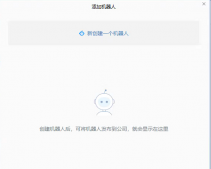前言
关键步骤主要分为数据准备和模型构建两大部分,其中,
数据准备主要工作:
- 1、训练集和测试集的划分
- 2、训练数据的归一化
- 3、规范输入数据的格式
模型构建部分主要工作
1、构建网络层、前向传播forward()
|
1
2
3
4
5
6
7
8
9
10
11
12
13
14
15
16
17
18
19
20
21
22
23
24
|
class LSTM(nn.Module):#注意Module首字母需要大写 def __init__(self, input_size=1, hidden_layer_size=100, output_size=1): super().__init__() self.hidden_layer_size = hidden_layer_size # 创建LSTM层和linear层,LSTM层提取特征,linear层用作最后的预测 # LSTM算法接受三个输入:先前的隐藏状态,先前的单元状态和当前输入。 self.lstm = nn.LSTM(input_size, hidden_layer_size) self.linear = nn.Linear(hidden_layer_size, output_size) #初始化隐含状态及细胞状态C,hidden_cell变量包含先前的隐藏状态和单元状态 self.hidden_cell = (torch.zeros(1, 1, self.hidden_layer_size), torch.zeros(1, 1, self.hidden_layer_size)) # 为什么的第二个参数也是1 # 第二个参数代表的应该是batch_size吧 # 是因为之前对数据已经进行过切分了吗????? def forward(self, input_seq): #lstm的输出是当前时间步的隐藏状态ht和单元状态ct以及输出lstm_out lstm_out, self.hidden_cell = self.lstm(input_seq.view(len(input_seq), 1, -1), self.hidden_cell) #按照lstm的格式修改input_seq的形状,作为linear层的输入 predictions = self.linear(lstm_out.view(len(input_seq), -1)) #返回predictions的最后一个元素 return predictions[-1] |
定义好每层之后,最后还需要通过前向传播的方式把这些串起来,这就涉及如何定义forward函数。
forward函数的任务需要把输入层、网络层、输出层链接起来,实现信息的前向传导。
forward该函数的参数一般为输入数据,返回值是输出数据。
2、实例化网络,定义损失函数和优化器
|
1
2
3
4
5
|
#创建LSTM()类的对象,定义损失函数和优化器model = LSTM()loss_function = nn.MSELoss()optimizer = torch.optim.Adam(model.parameters(), lr=0.001)#建立优化器实例print(model) |
3、训练模型、反向传播backward()
|
1
2
3
4
5
6
7
8
9
10
11
12
13
14
15
16
17
18
19
20
21
|
epochs = 150for i in range(epochs): for seq, labels in train_inout_seq: #清除网络先前的梯度值 optimizer.zero_grad() #初始化隐藏层数据 model.hidden_cell = (torch.zeros(1, 1, model.hidden_layer_size), torch.zeros(1, 1, model.hidden_layer_size)) #实例化模型 y_pred = model(seq) #计算损失,反向传播梯度以及更新模型参数 #训练过程中,正向传播生成网络的输出,计算输出和实际值之间的损失值 single_loss = loss_function(y_pred, labels) single_loss.backward()#调用backward()自动生成梯度 optimizer.step()#使用optimizer.step()执行优化器,把梯度传播回每个网络 # 查看模型训练的结果 if i%25 == 1: print(f'epoch:{i:3} loss:{single_loss.item():10.8f}')print(f'epoch:{i:3} loss:{single_loss.item():10.10f}') |
训练模型时需要使模型处于训练模式,即调用model.train()。
缺省情况下梯度是累加的,需要手工把梯度初始化或者清零,调用optimizer.zero_grad()。
在训练过程中正向传播生成网络的输出,计算输出与实际值之间的损失值。调用loss.backward()自动生成反向传播梯度,然后使用optimizer.step()执行优化器,把梯度传播回每个网络。
实现梯度反向传播的方法主要是复合函数的链式法则。Pytorch提供了自动反向传播的功能,使用nn工具箱,无需自己编写反向传播,直接让损失函数调用backward()即可。
反向传播中,优化器十分重要,这类优化算法通过使用参数的梯度值更新参数。
4、测试模型
|
1
2
3
4
5
6
7
8
9
10
11
12
13
14
15
16
17
18
|
fut_pred = 12test_inputs = train_data_normalized[-train_window:].tolist()#首先打印出数据列表的最后12个值print(test_inputs)#更改模型为测试或者验证模式model.eval()#把training属性设置为false,使模型处于测试或验证状态for i in range(fut_pred): seq = torch.FloatTensor(test_inputs[-train_window:]) with torch.no_grad(): model.hidden = (torch.zeros(1, 1, model.hidden_layer_size), torch.zeros(1, 1, model.hidden_layer_size)) test_inputs.append(model(seq).item())#打印最后的12个预测值print(test_inputs[fut_pred:])#由于对训练集数据进行了标准化,因此预测数据也是标准化了的#需要将归一化的预测值转换为实际的预测值。通过inverse_transform实现actual_predictions = scaler.inverse_transform(np.array(test_inputs[train_window:]).reshape(-1, 1))print(actual_predictions) |
全部代码如下:
|
1
2
3
4
5
6
7
8
9
10
11
12
13
14
15
16
17
18
19
20
21
22
23
24
25
26
27
28
29
30
31
32
33
34
35
36
37
38
39
40
41
42
43
44
45
46
47
48
49
50
51
52
53
54
55
56
57
58
59
60
61
62
63
64
65
66
67
68
69
70
71
72
73
74
75
76
77
78
79
80
81
82
83
84
85
86
87
88
89
90
91
92
93
94
95
96
97
98
99
100
101
102
103
104
105
106
107
108
109
110
111
112
113
114
115
116
117
118
119
120
121
122
123
124
125
126
127
128
129
130
131
132
133
134
135
136
137
138
139
140
141
142
143
144
145
146
147
148
149
150
151
152
153
154
155
156
157
158
159
160
161
162
163
164
165
166
167
168
169
170
171
172
173
174
175
176
177
178
179
180
181
182
183
184
185
186
187
188
189
190
191
192
193
|
import torchimport torch.nn as nnimport torch.nn.functional import seaborn as snsimport numpy as npimport pandas as pdimport matplotlib.pyplot as plt"""导入数据"""flight_data = sns.load_dataset("flights")print(flight_data.head())print(flight_data.shape)#绘制每月乘客的出行频率fig_size = plt.rcParams['figure.figsize']fig_size[0] = 15fig_size[1] = 5plt.rcParams['figure.figsize'] = fig_sizeplt.title('Month vs Passenger')plt.ylabel('Total Passengers')plt.xlabel('Months')plt.grid(True)plt.autoscale(axis='x',tight=True)plt.plot(flight_data['passengers'])plt.show()"""数据预处理"""flight_data.columns#显示数据集中 列的数据类型all_data = flight_data['passengers'].values.astype(float)#将passengers列的数据类型改为float#划分测试集和训练集test_data_size = 12train_data = all_data[:-test_data_size]#除了最后12个数据,其他全取test_data = all_data[-test_data_size:]#取最后12个数据print(len(train_data))print(len(test_data))#最大最小缩放器进行归一化,减小误差,注意,数据标准化只应用于训练数据而不应用于测试数据from sklearn.preprocessing import MinMaxScalerscaler = MinMaxScaler(feature_range=(-1, 1))train_data_normalized = scaler.fit_transform(train_data.reshape(-1, 1))#查看归一化之后的前5条数据和后5条数据print(train_data_normalized[:5])print(train_data_normalized[-5:])#将数据集转换为tensor,因为PyTorch模型是使用tensor进行训练的,并将训练数据转换为输入序列和相应的标签train_data_normalized = torch.FloatTensor(train_data_normalized).view(-1)#view相当于numpy中的resize,参数代表数组不同维的维度;#参数为-1表示,这个维的维度由机器自行推断,如果没有-1,那么view中的所有参数就要和tensor中的元素总个数一致#定义create_inout_sequences函数,接收原始输入数据,并返回一个元组列表。def create_inout_sequences(input_data, tw): inout_seq = [] L = len(input_data) for i in range(L-tw): train_seq = input_data[i:i+tw] train_label = input_data[i+tw:i+tw+1]#预测time_step之后的第一个数值 inout_seq.append((train_seq, train_label))#inout_seq内的数据不断更新,但是总量只有tw+1个 return inout_seqtrain_window = 12#设置训练输入的序列长度为12,类似于time_step = 12train_inout_seq = create_inout_sequences(train_data_normalized, train_window)print(train_inout_seq[:5])#产看数据集改造结果"""注意:create_inout_sequences返回的元组列表由一个个序列组成,每一个序列有13个数据,分别是设置的12个数据(train_window)+ 第13个数据(label)第一个序列由前12个数据组成,第13个数据是第一个序列的标签。同样,第二个序列从第二个数据开始,到第13个数据结束,而第14个数据是第二个序列的标签,依此类推。""""""创建LSTM模型参数说明:1、input_size:对应的及特征数量,此案例中为1,即passengers2、output_size:预测变量的个数,及数据标签的个数2、hidden_layer_size:隐藏层的特征数,也就是隐藏层的神经元个数"""class LSTM(nn.Module):#注意Module首字母需要大写 def __init__(self, input_size=1, hidden_layer_size=100, output_size=1): super().__init__() self.hidden_layer_size = hidden_layer_size # 创建LSTM层和linear层,LSTM层提取特征,linear层用作最后的预测 ##LSTM算法接受三个输入:先前的隐藏状态,先前的单元状态和当前输入。 self.lstm = nn.LSTM(input_size, hidden_layer_size) self.linear = nn.Linear(hidden_layer_size, output_size) #初始化隐含状态及细胞状态C,hidden_cell变量包含先前的隐藏状态和单元状态 self.hidden_cell = (torch.zeros(1, 1, self.hidden_layer_size), torch.zeros(1, 1, self.hidden_layer_size)) # 为什么的第二个参数也是1 # 第二个参数代表的应该是batch_size吧 # 是因为之前对数据已经进行过切分了吗????? def forward(self, input_seq): lstm_out, self.hidden_cell = self.lstm(input_seq.view(len(input_seq), 1, -1), self.hidden_cell) #lstm的输出是当前时间步的隐藏状态ht和单元状态ct以及输出lstm_out #按照lstm的格式修改input_seq的形状,作为linear层的输入 predictions = self.linear(lstm_out.view(len(input_seq), -1)) return predictions[-1]#返回predictions的最后一个元素"""forward方法:LSTM层的输入与输出:out, (ht,Ct)=lstm(input,(h0,C0)),其中一、输入格式:lstm(input,(h0, C0))1、input为(seq_len,batch,input_size)格式的tensor,seq_len即为time_step2、h0为(num_layers * num_directions, batch, hidden_size)格式的tensor,隐藏状态的初始状态3、C0为(seq_len, batch, input_size)格式的tensor,细胞初始状态二、输出格式:output,(ht,Ct)1、output为(seq_len, batch, num_directions*hidden_size)格式的tensor,包含输出特征h_t(源于LSTM每个t的最后一层)2、ht为(num_layers * num_directions, batch, hidden_size)格式的tensor,3、Ct为(num_layers * num_directions, batch, hidden_size)格式的tensor,"""#创建LSTM()类的对象,定义损失函数和优化器model = LSTM()loss_function = nn.MSELoss()optimizer = torch.optim.Adam(model.parameters(), lr=0.001)#建立优化器实例print(model)"""模型训练batch-size是指1次迭代所使用的样本量;epoch是指把所有训练数据完整的过一遍;由于默认情况下权重是在PyTorch神经网络中随机初始化的,因此可能会获得不同的值。"""epochs = 150for i in range(epochs): for seq, labels in train_inout_seq: #清除网络先前的梯度值 optimizer.zero_grad()#训练模型时需要使模型处于训练模式,即调用model.train()。缺省情况下梯度是累加的,需要手工把梯度初始化或者清零,调用optimizer.zero_grad() #初始化隐藏层数据 model.hidden_cell = (torch.zeros(1, 1, model.hidden_layer_size), torch.zeros(1, 1, model.hidden_layer_size)) #实例化模型 y_pred = model(seq) #计算损失,反向传播梯度以及更新模型参数 single_loss = loss_function(y_pred, labels)#训练过程中,正向传播生成网络的输出,计算输出和实际值之间的损失值 single_loss.backward()#调用loss.backward()自动生成梯度, optimizer.step()#使用optimizer.step()执行优化器,把梯度传播回每个网络 # 查看模型训练的结果 if i%25 == 1: print(f'epoch:{i:3} loss:{single_loss.item():10.8f}')print(f'epoch:{i:3} loss:{single_loss.item():10.10f}')"""预测注意,test_input中包含12个数据,在for循环中,12个数据将用于对测试集的第一个数据进行预测,然后将预测值附加到test_inputs列表中。在第二次迭代中,最后12个数据将再次用作输入,并进行新的预测,然后 将第二次预测的新值再次添加到列表中。由于测试集中有12个元素,因此该循环将执行12次。循环结束后,test_inputs列表将包含24个数据,其中,最后12个数据将是测试集的预测值。"""fut_pred = 12test_inputs = train_data_normalized[-train_window:].tolist()#首先打印出数据列表的最后12个值print(test_inputs)#更改模型为测试或者验证模式model.eval()#把training属性设置为false,使模型处于测试或验证状态for i in range(fut_pred): seq = torch.FloatTensor(test_inputs[-train_window:]) with torch.no_grad(): model.hidden = (torch.zeros(1, 1, model.hidden_layer_size), torch.zeros(1, 1, model.hidden_layer_size)) test_inputs.append(model(seq).item())#打印最后的12个预测值print(test_inputs[fut_pred:])#由于对训练集数据进行了标准化,因此预测数据也是标准化了的#需要将归一化的预测值转换为实际的预测值。通过inverse_transform实现actual_predictions = scaler.inverse_transform(np.array(test_inputs[train_window:]).reshape(-1, 1))print(actual_predictions)"""根据实际值,绘制预测值"""x = np.arange(132, 132+fut_pred, 1)plt.title('Month vs Passenger')plt.ylabel('Total Passengers')plt.xlabel('Months')plt.grid(True)plt.autoscale(axis='x', tight=True)plt.plot(flight_data['passengers'])plt.plot(x, actual_predictions)plt.show()#绘制最近12个月的实际和预测乘客数量,以更大的尺度观测数据plt.title('Month vs Passenger')plt.ylabel('Total Passengers')plt.xlabel('Months')plt.grid(True)plt.autoscale(axis='x', tight=True)plt.plot(flight_data['passengers'][-train_window:])plt.plot(x, actual_predictions)plt.show() |
到此这篇关于Pytorch实现LSTM案例总结学习的文章就介绍到这了,更多相关Pytorch实现LSTM内容请搜索服务器之家以前的文章或继续浏览下面的相关文章希望大家以后多多支持服务器之家!
原文链接:https://blog.csdn.net/ch206265/article/details/106962354









